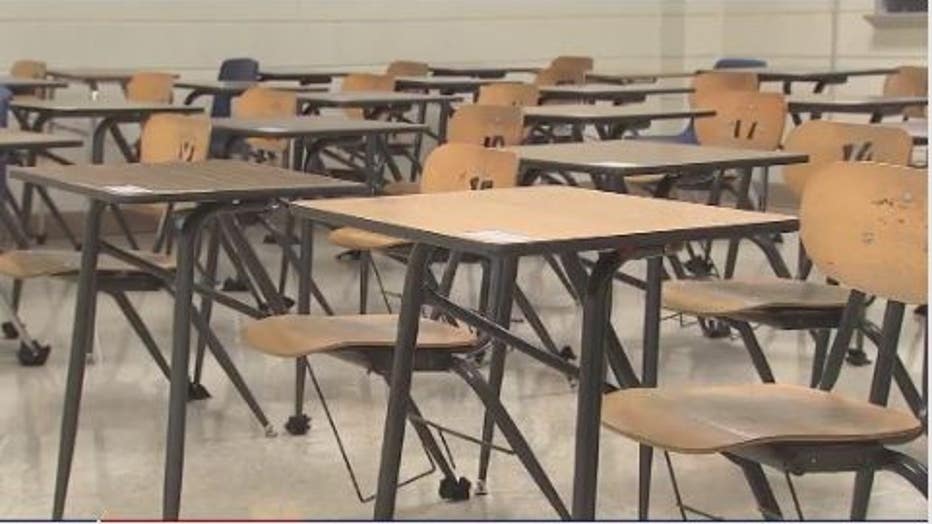Proposed Texas voucher would fully-fund tuition for most private, Catholic schools

Texas school choice bill goes up for hearing in House
The Texas House debated a new school voucher bill on Tuesday. The legislation is a top priority for Governor Greg Abbott, but it has consistently been derailed by the House. FOX 26's Greg Groogan has more.
AUSTIN - On Tuesday, the Texas House debated a bill that would create "education savings account" stipends of $10,000 for students in the Lone Star State.
That money would cover the annual tuition cost of most Texas private and parochial schools, according to executives representing nearly 1,300 private and Catholic campuses.
The so-called school choice legislation has been a top priority for Governor Greg Abbott, but has been consistently derailed in the House.
Private schools on education savings accounts
What they're saying:
The House Public Education Committee called several executives representing private schools to debate House Bill 3.
Jennifer Allmon with the Texas Catholic Conference of Bishops urged lawmakers to empower parents to choose the best educational environment for their children.
"The ESA amounts in the bill will cover the average tuition amounts in our Catholic schools. Catholic schools in Texas are growing and ready to serve," Allmon said. "We estimate that 90 percent of our schools will participate, and we have capacity to add about 25,000 new students in the 2026-2027 school year. Our average K-8 tuition is under $8,000 with schools as low as $2,000 or $3,000. Our average high school tuition is less than $12,000."
Laura Colangelo, Executive Director of the Texas Private Schools Association, sought to dispel the widely reported notion that the proposed state subsidy would fall well short of funding the full cost of attending non-public institutions.
"There are currently 75,575 open seats in accredited schools across the state with the median tuition of $9,400 and 90 percent of those schools are interested in participating in this program," said Colangelo who represents more than 900 schools.
Colangelo also countered claims that private schools exclude disabled students.
"Currently, 19 percent of students enrolled in private schools have special needs. This is a higher percentage of children with special needs in private schools than in public schools. To say that private schools do not serve these children is simply not true," said Colangelo.
READ MORE: Latest poll shows most Texans support school choice
In its current version, HB3 would fund $1 billion for ESA'S, enough to provide stipends to 80,000 of the state's 5.5 million students.
75 percent of HB3's funding would be reserved for low-income students and those challenged with special needs.
State Representative Brad Buckley, HB-3's author says his legislation is about empowering parents.
"I know the private schools in my district. I know the kids who go there. Many families are struggling and forgoing college savings, vacations, saving for retirement to make sure their kids are in the best environment," said Buckley.
The other side:
At Tuesday's hearing, State Representative James Talarico (D-Austin) led the opposition.
"Your bill allows people who are literally millionaires to take money that could go to public schools to subsidize their private school tuition. Are you okay with that?" asked Talarico.
H.B. 3 vs. S.B. 2

The Differences:
The Texas Senate passed its version of a school choice bill, Senate Bill 2, in February. That bill also establishes savings accounts for families to use public money for private education.
House Bill 3 is similar to Senate Bill 2 in that both bills would require a $1 billion investment from the state to establish the accounts.
Under both bills, families chosen for the program would be allowed to use the funds on private school tuition, textbooks, transportation and other education expenses.
READ MORE: Texas Senate passes SB2, would allow parents to use tax funds for private schools
The bills start to move away from each other when it comes to who is considered for the accounts and how much each student would receive.
While Senate Bill 2 would add a flat $10,000 to a student's savings account, the House version sets the number at "85 percent of the estimated statewide average amount of state and local funding per student in average daily attendance for the applicable school year."
The other difference is in how the programs choose who gets a spot if more applications are received.
If both bills are passed, leaders will have to come to an agreement on the differences between the bills.
The Source: Information in this article comes from testimony made in a House Public Education Committee hearing on March 11, 2025. Other information comes from past FOX coverage and House Bill 3 and Sente Bill 2.

